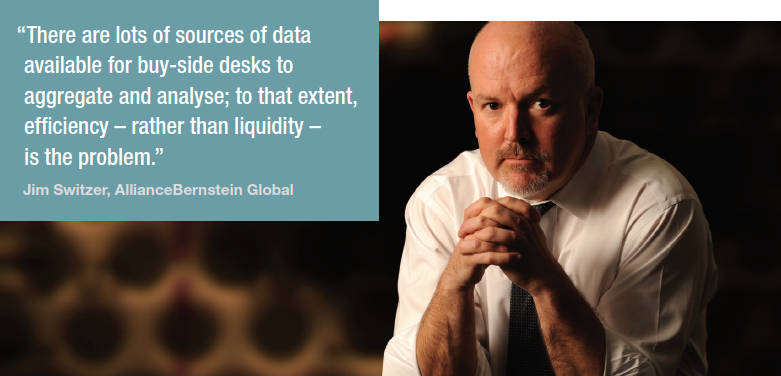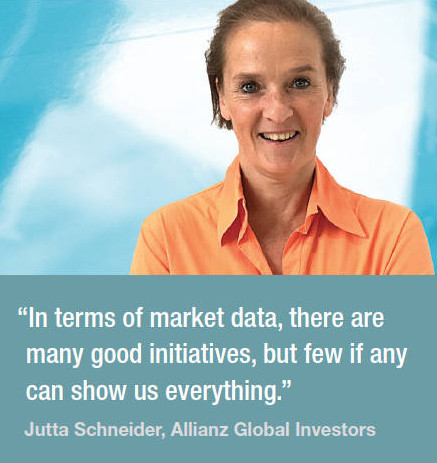Transparent assessment of bond prices is a cornerstone of trust between investment managers and end investors. Chris Hall investigates.
Pricing in fixed income markets is increasingly a source of legal trouble. On 19 January 2017, Stefan Lumiere, former credit portfolio manager at hedge fund Visium Asset Management, was found guilty of using fake broker prices to inflate the value of funds to end investors and leading “investors to believe that the bonds were relatively liquid” according to a statement by the US Department of Justice.
US Attorney, Preet Bharara said, “For years, Lumiere mismarked securities in his portfolio, using sham broker quotes and fake purchase prices to vastly overstate the value of his fund.”
An ongoing court case against three former Nomura traders, brought by the US Attorney for the District of Connecticut in 2015, alleges they lied to investment funds about the price of residential mortgage-backed securities (RMBS) by “fraudulently inflating the purchase price at which Nomura could buy a RMBS bond to induce their victim-customers to pay a higher price for the bond, and by fraudulently deflating the price at which Nomura could sell a RMBS bond to induce their victim-customers to sell bonds at cheaper prices, causing Nomura and the three defendants to profit illegally,” according to a statement from the Department of Justice.
In February 2017, Reuters reported that hedge fund Premium Point Investments (PPI) had confirmed an investigation by the SEC in connection with valuations of assets held by its funds.
 Bond pricing is far from an exact science for honest traders and investors. As PPI’s own brochure from 2016 notes, “Illiquidity can disrupt the historical price relationships on which certain of PPI’s investment strategies are based, as the fewer transactions that take place the greater the risk of market values not reflecting true pricing relationships or fair value.”
Bond pricing is far from an exact science for honest traders and investors. As PPI’s own brochure from 2016 notes, “Illiquidity can disrupt the historical price relationships on which certain of PPI’s investment strategies are based, as the fewer transactions that take place the greater the risk of market values not reflecting true pricing relationships or fair value.”
Now regulation is making pricing transparency a matter of greater concern for all asset managers. In Europe, MiFID II will demand a detailed demonstration of traders’ adherence to best execution principles. Those best practices will likely be adopted on both sides of the Atlantic.
“Buy-side fixed-income traders have to be able to price risk in illiquid instruments, even those that have not traded in the last 12 months,” asserts Jim Switzer, head of credit trading at AllianceBernstein [AB] Global.
Facing poor sell-side market participation and excessive central bank participation, it is harder than ever for asset managers to find liquidity, pin down trading counterparties and determine tradable prices.
 Jutta Schneider, Frankfurt-based head of fixed income trading for Europe at Allianz Global Investors, says, “Traders need to get deeper into the market, pro-actively finding out where liquidity might lie, rather than waiting for prices to come in. Similarly, portfolio managers must also change, perhaps accepting a different maturity in the same credit if their initial preference would take too long to execute.”
Jutta Schneider, Frankfurt-based head of fixed income trading for Europe at Allianz Global Investors, says, “Traders need to get deeper into the market, pro-actively finding out where liquidity might lie, rather than waiting for prices to come in. Similarly, portfolio managers must also change, perhaps accepting a different maturity in the same credit if their initial preference would take too long to execute.”
Quantitative assessment of qualitative processes
Buy-side firms across the board are improving their capacity to analyse markets on the basis of price and liquidity pre-trade. These improvements can be made on a qualitative and a quantitative basis. To build up its own capabilities, Deutsche Asset Management has increased the level of specialisation on its fixed-income trading team while also deepening relationships with portfolio managers and sell-side counterparts.
“Traders work very closely with both PMs and key counterparties as liquidity providers,” says Michael Theel, the firm’s head of fixed-income trading for EMEA. “Greater interaction with PMs helps us contribute to their investment process, as their ‘eyes and ears’ to the market. Frequent dialogue and good counterparty relationships help traders obtain a clear picture of axes and inventory to feed back to PMs, as well as allowing them to access deeper liquidity and balance sheet usage.”
While deep relationships are increasingly important, traders only have so many eyes and ears. As such, they have increasing need of high-quality pre-trade data to help them choose appropriate counterparts and protocols for particular trades.
AGI’s Schneider says, “In terms of market data, there are many good initiatives, but few if any can show us everything. Currently we’re looking left and right at multiple screens, but would ideally prefer a consolidated view of liquidity on a single screen.”
The bond valuation tools of market data providers have been recently joined by data aggregation platforms – which consolidate current axes, inventory and indications of interest from liquidity-providers, as well as providing trading history on specific bonds – not to mention a plethora of liquidity-scoring tools and transaction cost analysis capabilities from trading platform providers and other specialist vendors.
AB Global leveraged existing links into multiple sell-side counterparts to develop its own bond price aggregation and analytics platform, ALFA, in recognition of the growing primacy of pre-trade transparency.
“There are lots of sources of data available for buy-side desks to aggregate and analyse,” notes Switzer. “To that extent, efficiency – rather than liquidity – is the problem. We developed ALFA to help us make smart and timely decisions, and to generate alpha as a liquidity provider ourselves.”
AB Global recently struck a deal to add ALFA to Algomi’s solution set, bringing the platform to a wider buy-side audience. But while more tools become available to support better trading outcomes in the new bond trading environment, tough choices still lie head.
The cost of a price
Developing or onboarding systems still come at a cost. That can limit their adoption, making price formation more challenging.
 “With the margins of active managers under constant pressure, trading desks can struggle to justify expenditure, which may prove a challenge for the business models of fixed-income data aggregation platforms going forward,” says Nick Robinson, former head of fixed-income trading at Schroder Investment Management.
“With the margins of active managers under constant pressure, trading desks can struggle to justify expenditure, which may prove a challenge for the business models of fixed-income data aggregation platforms going forward,” says Nick Robinson, former head of fixed-income trading at Schroder Investment Management.
Smaller firms in particular may struggle to source liquidity cost-effectively in illiquid bonds. Their relatively lower trading volumes make dealers less inclined to provide them with liquidity, pushing the cost of liquidity upwards and potentially increasing the need for dealers.
“With large brokers offering less coverage, the buy side has greater need of specialist sell-side counterparties, but there are costs to maintaining these relationships, not least from a KYC perspective. Anecdotally, one hears of firms adopting a ‘one in, one out’ policy for onboarding brokers to maintain control of costs,” says Mark Goodman, head of electronic trading for FX, rates and credit at UBS, whose platform volumes jumped 20% last June, as clients raced to trade electronically in volatile conditions in the aftermath of the UK’s Brexit referendum result.
 Medium and small fund managers often have less well-resourced trading desks, making the cost of onboarding brokers, or bringing in more data and data analysis technology, proportionately higher.
Medium and small fund managers often have less well-resourced trading desks, making the cost of onboarding brokers, or bringing in more data and data analysis technology, proportionately higher.
Opportunistic execution tactics – such as flexibility on instrument parameters or trade timing – may not be enough to stave off more radical solutions, such as trade desk outsourcing or greater recourse to bond exchange-traded funds.
However, there are compelling reasons for buy-side firms to make the investment, rather than relying upon partners. The enhanced expertise and insights available to an informed buy-side desk is leading to an increased willingness by asset managers to make prices, via trading platforms that support all-to-all trading and which enable broad sell-side access. That is supported by a more nuanced appreciation of the costs and constraints faced by sell-side counterparties.
 The real pressure for investment firms is coming from MiFID II. Buy-side firms large and small are heavily focused on its impending best execution and reporting requirements. Greater use and availability of data to inform execution processes should make it possible for at least well-resourced firms to prove compliance in the longer term. But for the moment, many are wrestling with the challenge of determining their ‘decision’ tree for efficiently sourcing elusive fixed income instruments, the location of which – and as such the tools required to unearth it – may change on a daily basis.
The real pressure for investment firms is coming from MiFID II. Buy-side firms large and small are heavily focused on its impending best execution and reporting requirements. Greater use and availability of data to inform execution processes should make it possible for at least well-resourced firms to prove compliance in the longer term. But for the moment, many are wrestling with the challenge of determining their ‘decision’ tree for efficiently sourcing elusive fixed income instruments, the location of which – and as such the tools required to unearth it – may change on a daily basis.
Both MiFID II’s best execution and reporting requirements have the potential to shine a light on the darker recesses of the corporate bond market, providing further fuel for the data aggregation and analytics tools currently being developed and limiting the future scope for mispricing scandals. It certainly sets a baseline of proof.
“It can be very challenging to establish a best execution policy for the illiquid bond market and demonstrate ongoing compliance with it,” says Deutsche’s Theel. “We are constantly tested by our control functions and processes to provide context and colour reflecting illiquid market conditions, for example sharing screen shots showing no real offers or bids in a particular bond or showing that there is no real market depth for a particular sized trade.”
©Markets Media Europe 2025












